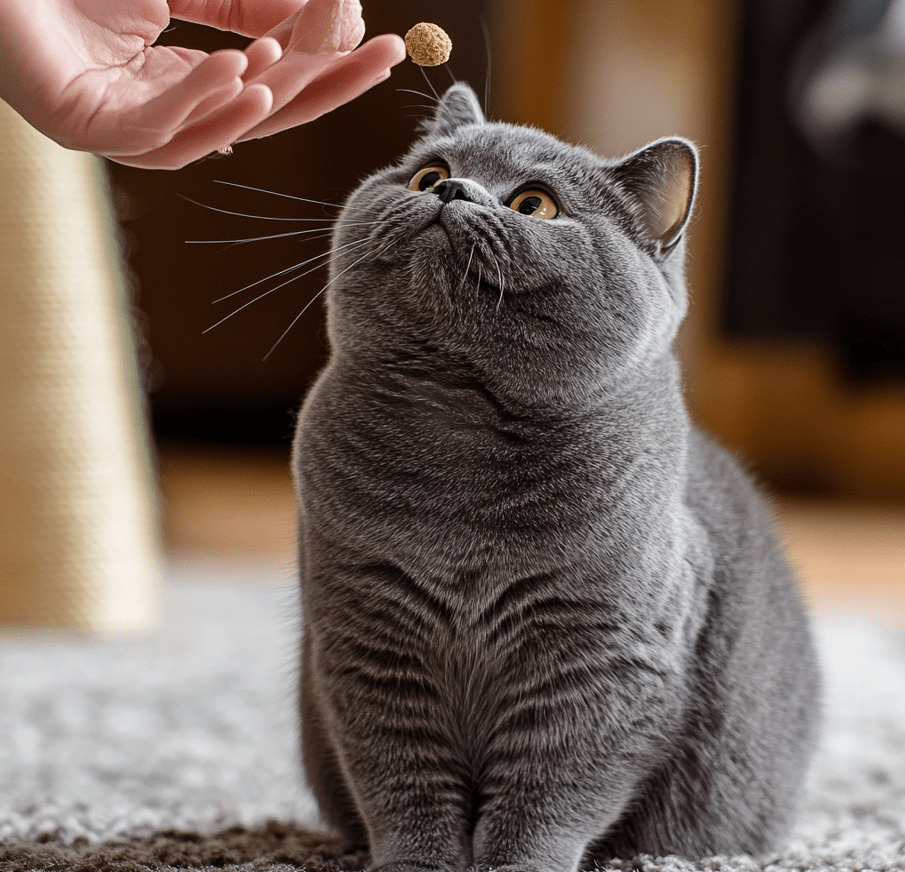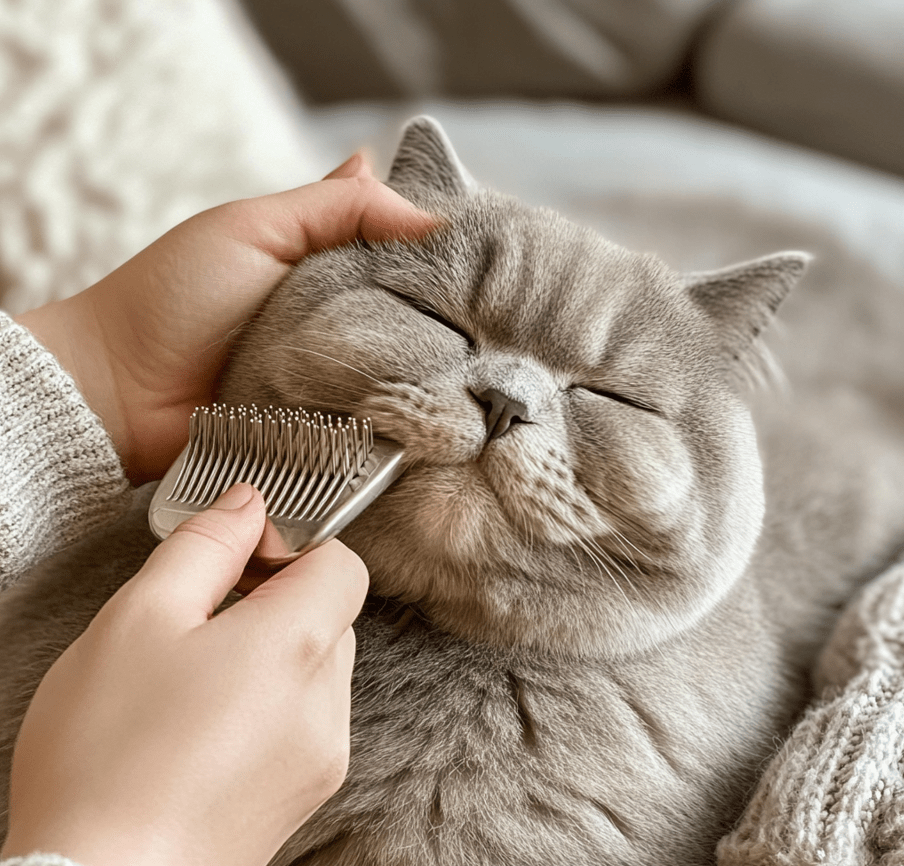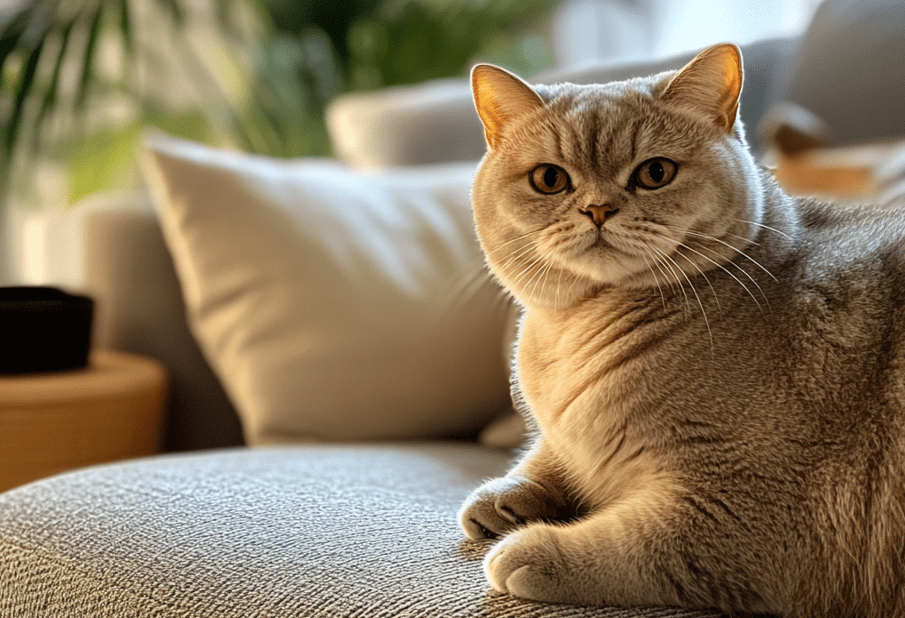
Shedding season can be a challenging time for British Shorthair owners, as their beloved cats leave loose fur on furniture, clothing, and floors. Learning how to remove loose fur British Shorthair effectively is essential for maintaining a clean home and keeping your cat comfortable. British Shorthairs, with their dense, plush coats, require specific grooming techniques to manage shedding. This comprehensive guide will walk you through practical, pet-safe methods to remove loose fur, reduce shedding, and keep your British Shorthair’s coat healthy and shiny during shedding season.
In this article, we’ll cover the causes of shedding, the best grooming tools, step-by-step techniques, and tips to minimize fur buildup in your home. Whether you’re a new or experienced British Shorthair owner, this guide is designed to be your go-to resource for managing shedding season like a pro.
Why Do British Shorthairs Shed?
British Shorthairs are known for their thick, double-layered coats, which provide insulation and contribute to their iconic plush appearance. However, this dense coat also means they shed, particularly during seasonal changes in spring and fall. Understanding why shedding occurs can help you manage it effectively.
Common Causes of Shedding in British Shorthairs
Seasonal Changes: British Shorthairs shed more heavily in spring to prepare for warmer weather and in fall to grow a thicker winter coat.
Diet and Nutrition: A poor diet lacking essential fatty acids or nutrients can lead to excessive shedding or a dull coat.
Stress or Health Issues: Stress, allergies, or underlying medical conditions like skin infections can cause abnormal shedding.
Grooming Habits: Infrequent grooming can allow loose fur to accumulate, leading to matting or excessive shedding.
By addressing these factors and implementing a consistent grooming routine, you can effectively remove loose fur British Shorthair and keep shedding under control.
Essential Tools for Removing Loose Fur from Your British Shorthair

To manage shedding, you’ll need the right grooming tools. Using high-quality, cat-safe tools ensures your British Shorthair stays comfortable and stress-free during grooming sessions. Below are the must-have tools for removing loose fur:
1. Slicker Brush
A slicker brush is ideal for British Shorthairs, as it effectively removes loose fur and prevents matting. Look for a brush with fine, short bristles that won’t irritate your cat’s skin.
2. Deshedding Tool
Deshedding tools, like the FURminator, are designed to reach deep into the undercoat and remove loose fur without damaging the topcoat. Use these tools sparingly to avoid over-grooming.
3. Grooming Gloves
Grooming gloves are a gentle option for cats that dislike brushes. They allow you to pet your British Shorthair while collecting loose fur, making grooming feel like bonding time.
4. Comb with Wide and Narrow Teeth
A dual-sided comb is perfect for detangling and smoothing your cat’s coat. Use the wide-tooth side for initial grooming and the narrow-tooth side for finishing touches.
5. Pet-Safe Wipes
Pet-safe wipes can help remove loose fur and dander from your cat’s coat between grooming sessions, keeping their fur clean and reducing allergens.
6. Vacuum with Pet Hair Attachment
To manage loose fur in your home, a vacuum with a pet hair attachment is a lifesaver. It helps clean fur from furniture, carpets, and other surfaces.
Investing in these tools will make it easier to remove loose fur British Shorthair and maintain a healthy coat throughout shedding season.
Step-by-Step Guide to Remove Loose Fur from Your British Shorthair
Grooming your British Shorthair regularly is the most effective way to manage shedding. Follow this step-by-step guide to remove loose fur safely and efficiently.
Step 1: Prepare Your Cat and Grooming Area
1.Choose a quiet, comfortable space for grooming to keep your cat relaxed.
2.Place a towel or mat on the grooming surface to collect loose fur.
3.Have all your tools ready and reward treats on hand to make the experience positive.
Step 2: Start with Gentle Petting
1.Begin by petting your British Shorthair to help them feel at ease.
2.Use grooming gloves to collect loose fur while petting, which can serve as an initial fur-removal step.
Step 3: Brush with a Slicker Brush
1.Use a slicker brush to gently brush your cat’s coat in the direction of hair growth.
2.Focus on areas prone to shedding, such as the back, sides, and tail.
3.Work in small sections to avoid overwhelming your cat.
Step 4: Use a Deshedding Tool (Optional)
1.If your British Shorthair has a heavy undercoat, use a deshedding tool once or twice a week.
2.Apply light pressure and avoid overusing the tool to prevent skin irritation.
Step 5: Comb for a Smooth Finish
1.Use a dual-sided comb to detangle any remaining knots and smooth the coat.
2.Pay attention to sensitive areas like the belly and behind the ears.
Step 6: Clean Up Loose Fur
1.Use pet-safe wipes to remove any remaining loose fur or dander.
2.Vacuum the grooming area to keep your home fur-free.
Step 7: Reward Your Cat
1.Offer treats or praise to reinforce positive grooming experiences.
2.Keep grooming sessions short (5-10 minutes) to prevent stress.
By following these steps consistently, you’ll be able to remove loose fur British Shorthair effectively and keep their coat in top condition.
Tips to Reduce Shedding in British Shorthairs

In addition to regular grooming, you can take proactive steps to minimize shedding and keep your British Shorthair’s coat healthy.
1. Feed a High-Quality Diet
A balanced diet rich in omega-3 and omega-6 fatty acids promotes a healthy coat and reduces excessive shedding. Look for cat food formulated for skin and coat health.
2. Keep Your Cat Hydrated
Proper hydration supports skin health and reduces dryness, which can contribute to shedding. Ensure your British Shorthair has access to fresh water at all times.
3. Manage Stress
Stress can trigger excessive shedding in British Shorthairs. Provide a calm environment, engaging toys, and regular playtime to keep your cat relaxed.
4. Regular Vet Checkups
Schedule annual vet visits to rule out health issues that may cause abnormal shedding, such as allergies, parasites, or hormonal imbalances.
5. Use a Pet-Safe Shampoo
Bathing your British Shorthair with a pet-safe, moisturizing shampoo once every 4-6 weeks can help remove loose fur and keep their coat clean. Avoid over-bathing, as it can dry out their skin.
6. Control Indoor Humidity
Dry air can lead to dry skin and increased shedding. Use a humidifier in your home to maintain optimal humidity levels, especially during winter.
Implementing these tips will complement your grooming routine and help you remove loose fur British Shorthair while promoting overall coat health.
How to Manage Loose Fur in Your Home
Even with regular grooming, loose fur can accumulate in your home during shedding season. Here are practical ways to keep your living space clean:
1. Vacuum Regularly
Use a vacuum with a pet hair attachment to clean carpets, furniture, and curtains. Vacuum at least twice a week during shedding season.
2. Use Lint Rollers
Keep lint rollers handy for quick cleanups on clothing, upholstery, and bedding.
3. Wash Pet Bedding
Wash your British Shorthair’s bedding weekly to remove trapped fur and dander.
4. Use Furniture Covers
Place washable covers or throws on furniture to protect surfaces from fur buildup. These are easy to clean and can be swapped out as needed.
5. Install Air Purifiers
An air purifier with a HEPA filter can reduce airborne pet dander and loose fur, improving air quality in your home.
By combining these home maintenance strategies with regular grooming, you can effectively manage the impact of shedding and remove loose fur British Shorthair from both your cat and your living space.
Common Mistakes to Avoid When Grooming Your British Shorthair
To ensure your grooming efforts are safe and effective, avoid these common mistakes:
1. Over-Grooming
Excessive brushing or deshedding can irritate your cat’s skin or damage their coat. Stick to a consistent but moderate grooming schedule.
2. Using Human Grooming Products
Human shampoos or brushes can harm your cat’s skin and coat. Always use pet-safe products designed for cats.
3. Ignoring Matting
Matted fur can cause discomfort and skin issues. Check for mats regularly, especially in hard-to-reach areas like under the legs.
4. Forcing Grooming Sessions
If your British Shorthair is stressed or resistant, don’t force grooming. Take breaks and use positive reinforcement to build trust.
5. Neglecting Dental and Nail Care
Grooming isn’t just about fur. Regularly check your cat’s teeth and trim their nails to maintain overall health.
Avoiding these pitfalls will make grooming a positive experience for both you and your British Shorthair, ensuring you can remove loose fur British Shorthair without causing stress or discomfort.
When to Seek Professional Help
While most shedding can be managed at home, there are times when professional help is needed. Contact a veterinarian or professional groomer if you notice:
Excessive Shedding: Persistent or abnormal shedding that doesn’t improve with grooming.
Skin Issues: Redness, bald patches, or sores that may indicate allergies or infections.
Behavioral Changes: If your British Shorthair becomes aggressive or overly stressed during grooming.
Matted Fur: Severe matting that you can’t safely remove at home.
A professional can provide specialized care and recommend treatments to address underlying issues, ensuring your cat’s coat and skin remain healthy.
Conclusion

Managing shedding season for your British Shorthair doesn’t have to be overwhelming. By using the right tools, following a consistent grooming routine, and implementing proactive strategies, you can effectively remove loose fur British Shorthair and keep your home fur-free. Regular grooming not only reduces shedding but also strengthens the bond between you and your cat, ensuring they feel comfortable and cared for.
With the tips and techniques outlined in this guide, you’re equipped to handle shedding season like a pro. From choosing the best grooming tools to maintaining a clean home, this comprehensive resource is designed to be your ultimate guide to keeping your British Shorthair’s coat healthy and beautiful year-round.
Start implementing these strategies today, and enjoy a happier, healthier British Shorthair—and a cleaner home!




